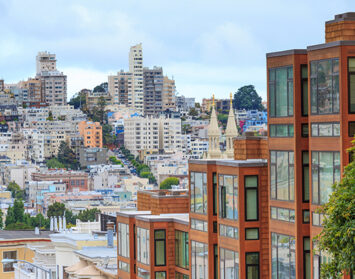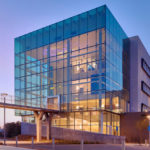Market is being driven by seemingly insatiable demand for (and limited supply of) large-block office space.
By Cameron Love
San Francisco’s commercial real estate market remains on a torrid pace entering the second half of 2019 with another surge of large technology leases and high-growth IPO’s. While vacancy edges to historically low levels, the relentless demand is comprised of an increasingly high number of large block requirements greater than 50,000 square feet. The market’s velocity is consistent across all sizes of tenants, but at least the smaller partial floor or single floor tenants will find a reasonable number of available space options, albeit at record high rents. And choosing among expensive alternatives is still better than the seemingly barren landscape facing companies in the hunt for 100,000 square feet or more.
Spotlight: San Francisco
- Bolstered by its growing business and the broad health of the Bay Area economy, San Francisco-based First Republic Bank made another splash grabbing the remaining availability at 1 Front Street totaling 195,000 square feet. Also interesting to note, several large companies are choosing this as a time to establish their first presence in the city, such as Sony, headquartered in San Mateo, which signed a 131,000 square foot lease at 303 2nd and formerly Mill Valley-based Glassdoor, who will relocate its headquarters to the financial district at 50 Beale in 116,000 square feet.
- Big deals continue to dominate and define the market, including Autodesk (117,673 SF), Samsara (116,037 SF), O’Melveny & Myers (79,920 SF) and WeWork (77,000 SF).
- Just as San Francisco’s politicians decided to table a proposed “IPO tax” for another calendar year until the November 2020 elections, the massive IPO exit trend continued with Slack’s offering in June. There is no sign of a slowdown into the second half of the year with the ever anticipated WeWork set to begin trading in September, even after the wave of public offerings from the likes of Uber and Lyft in the first quarter hit potholes off the starting line.
- Active tenant requirements being tracked now total over 8 million SF, up 1.3 million SF from last quarter.
- The vacancy rate remains at historically low levels, near 5.0% for Class A buildings across the City, which can be effectively considered “full occupancy,” given the cycle of relocations, and the fact that a number of tired, third generation spaces are effectively unleasable without substantial tenant improvement investment. On the large-block front, the recurring theme seems to be “phased occupancy.” Landlords can deliver large blocks of space, but not all at once, and you will likely need to pre-commit to future space deliveries at today’s record high rents. Opportunities over 50,000 square feet available this year can be counted on two hands.
- The rental rate trend in the second quarter returned to the quarterly increases that were routinely experienced between 2014-2017, as Class A asking rates reached $85.56 per square foot up 4% from Q1. Spaces with views of a bridge or the Bay are holding out for $120 per square foot fully serviced, and if you can find it, creative brick and timber space within walking distance of Caltrain endures as some the costliest office space in the city.
- The investment sale market experienced a mini-resurgence this quarter, coming out of the dip left by the slowdown of Asian investment from 2018. Notable trades included Zynga’s sale of its most valuable asset and longtime home, 650 Townsend, to Beacon Capital and CalSTRS and JUUL purchasing 123 Mission, a 345,000 square foot tower, from Northwood for its new home after growing increasingly frustrated in its leasing efforts. A $1,000 per square foot price tag is the new normal for Class A assets.
As San Francisco continues its remarkable economic expansion, all eyes will be on WeWork this fall, as one of the largest occupiers of commercial office space in our city hits the public market. There is no shortage of varying opinions on the subleasing giant’s prospects, but time will certainly tell. And either way, the San Francisco commercial real estate market will be significantly impacted, for better or for worse, by We Company’s massive footprint.
Cameron Love is an executive vice president of Hughes Marino, a global corporate real estate advisory firm that specializes in representing tenants and buyers. Contact Cameron at 1-844-662-6635 or cameron@hughesmarino.com to learn more.










